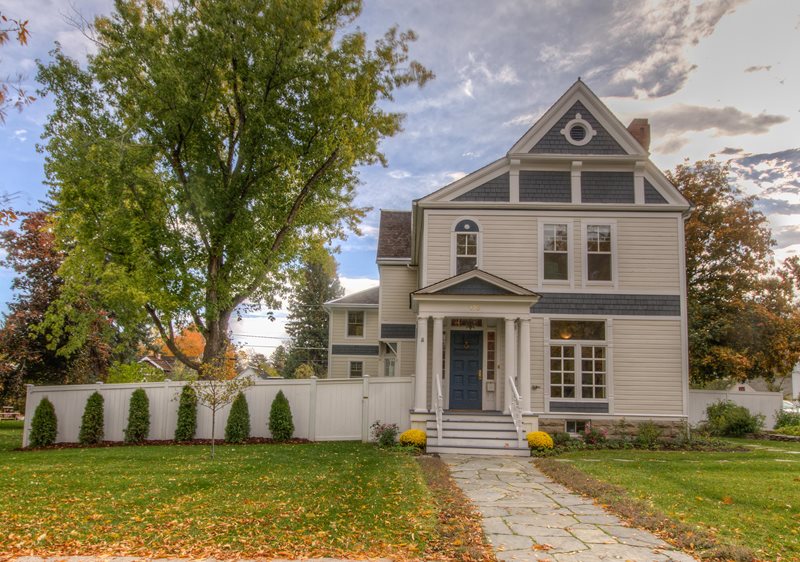Market Watch

Celebrating Historic Significance
Posted on October 5, 2017
Bozeman is appreciated for so many reasons, but the abundance of stunning, historic homes is especially enjoyed by many of us in the real estate industry. The opportunity to list or sell a home that was built during the early days of Bozeman's thriving development is certainly an honor. Around 1873, the town of Bozeman had grown enough to begin construction of permanent buildings and homes, and by 1883 the City of Bozeman was incorporated. The years since then have witnessed substantial growth into what we now see. And as some structures have been neglected and gone by the wayside, so many others have been diligently cared for and renovated as needed for preservation. In the 1980s, historic districts were set up and homes began to be placed on the historic registry. For example, South Black - South Tracy Avenue District is the most highly concentrated, especially of bungalow style homes. The Bon Ton District, in the area directly surrounding the 200-1000 blocks of South Willson, features many of the more distinguished early Bozeman residences. According to the City of Bozeman's website, there are currently 42 structures, both residential and commercial, that are classified as historic. Several more are under review on the pending list. It is a worthwhile endeavor to peruse the site and read about their historical significance. What draws us in to these homes varies from the grand porches to the stained-glass windows; from architectural details no longer common to the extensive use of brick both inside and out. Even the more modest bungalows are resplendent in show stopping details. Additionally, our sense of curiosity is piqued by iconic mansions that once were home to those who started our fine community. There is a unique Spanish mission style home on South Willson Avenue whose arches and red roof make it stand out from the crowd. Queen Anne style residences sprinkle the older neighborhoods. A grain elevator, churches and rectories, the Hotel Baxter, and the Art Deco styled Hamill Apartments are all included on the historic registry, with many of them being designed by Fred F. Willson, the only notably active architect in Bozeman from 1910 to 1956. Another nearby town brimming with historically significant homes is Butte. During its major boom in the late 1800s, hundreds of homes and mansions were built on the west side with wealth gained from "The Richest Hill on Earth" via copper mining. Urban renewal has been taking place in uptown Butte with the assistance of some matching funds available through the Urban Revitalization Agency. Butte has even received some national limelight recently with the release of an episode of "Buttetification" on HGTV. The hosts of the show, Amy and Ty, took on an 1897 Victorian to update while retaining what makes it special. Another interesting aspect of the history of Butte, and greater Montana as well, is the existence of brothel style architecture which began in the late 1800s. The Dumas, located in Butte's former Red-Light district, consists of 42 rooms and was an operational house of ill repute until 1982 (or longer according to some locals). History buffs and tourists alike can tour the Dumas Museum to get a feel for a different style of architecture and purpose. While we often conjure up visions of towers and turrets and elaborate decorative trim, many homes in our area built during this same time frame go the route of stone ranch homes. For example, the Thextondale Homestead south of Ennis, which is still a working Montana ranch, is listed on the National Register of Historic Places. Virginia City began as a town with quickly constructed log homes which then made way for some more refined housing options. The town nearly collapsed during the 1940s until the Bovey family visited town and viewed this piece of Montana history as worth saving. They turned Virginia City into the tourist and historical destination it is today. On the collegiate level, there is much to appreciate in this area. The Montana State University Historic District stands out, most notably in the form of Montana Hall, a Collegiate Gothic design from the period of 1896-1898. Butte enjoyed the beginning of what is now Montana Tech (Montana School of Mines at the time) in the form of a Renaissance Revival building named Main Hall in 1897. The University of Montana Western in Dillon began in 1896 under the name of State Normal School. Main Hall was the original building on campus but had weathered greatly over the years. In 2016, a ten-year renovation project on this historic gem was completed. Updating a 120 year old building to meet the high tech needs of a college campus while preserving its historic value was a painstaking but rewarding endeavor for those involved. In fact, the building contractors were awarded "Best Historic Preservation" earlier this year at the 2017 Annual Montana Contractors Association convention. During this 125th anniversary celebration of Montana State University, do yourself a favor and take a walk through some of the landmark buildings and surrounding neighborhoods that helped establish Bozeman's foundation.
